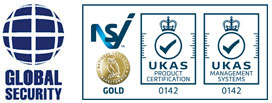If you own or manage a business premises such as an office or factory, no doubt you will already be aware of the importance of good security measures. Breaches of security threaten the safety of your staff and the reputation of your business. Loss of assets or sensitive data can lead to massive disruption that will cost you time and money.
As technology evolves and security measures become more robust and sophisticated, it pays to conduct regular reviews of your business security arrangements. Here is a guide to conducting a thorough security audit.
- Establish who will be involved in the audit
It’s important to include everyone who is involved in the management and maintenance of your business operations, such as the facilities team, IT technicians, and senior level managers. You may also want to include an external team of security consultants so you can be certain of up to date and professional information.
- Conduct a risk assessment
Identify any potential security risks, such as insecure access points, the location of valuable equipment or sensitive data, recent crime patterns in the area, and any previous attempted or actual breaches of security.
- Assess current security measures
Examine current security policies and procedures to check if they are still relevant to the nature of the business and premises, adequate for the number of staff, up-to-date, and familiar to all staff.
- Perform a full on-site survey of security measures
Gather all relevant audit team members, and conduct a survey of the site. As you walk around, document evidence with photographs and detailed notes. Start with the perimeter fences, walls, or gateways to check for any signs of breakages or damage that need repairing. Are there gates that require locks or extra access control measures?
Check that the entire site is covered by CCTV footage, and that all of the cameras are in good working order. Assess how well-lit the premises are, particularly around entrances and carparks. Good lighting will deter intruders and improve the quality of CCTV footage.
- Test your emergency response plan
Organise a rehearsal of your emergency response procedures and ensure that your staff are fully aware of the plan. Put a chain of command in place so that all employees know what their role is and who to refer to in specific situations.
The plans should also include details of outside parties involved, such as near neighbours, medical facilities, and the emergency contact number of all staff members. Roll out training so that all staff remain vigilant for signs of a security breach and know how to report them promptly.
- Compile findings and recommendations
Compile all the findings of the audit team in a report and put forward recommended changes.
- Implement the changes
Of course, the last crucial step is to put the recommendations into action, such as upgrading the CCTV, intruder alarms, or access control measures.

Leave A Comment